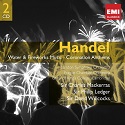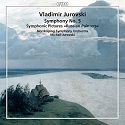It’s also not truly summer without a fireworks display.
Whether it’s for a national holiday or following up a baseball game, there’s
not much better than seeing the sky explode with those spectacular sparks of
color. Enjoy the show, and let our July playlist be the soundtrack as the
fireworks Light Up The Night!
To hear the playlist, access NML as usual, go to the Playlists section, and select the Playlist of the Month folder under the Naxos Music Library Playlists tab. If you are on your institution's premises, you may also be able to access it if you CLICK HERE.
1. George Frideric Handel – Music for the Royal Fireworks: IV. La rejouissance – At the request of King George II, Handel’s initial version of Music for the Royal Fireworks was arranged for wind instruments and percussion only. The music was a great success, which cannot be said of the fireworks it was meant to accompany; the event was marred by rain, and one of the pavilions caught fire in the middle of the display.
2. Ottorino Respighi – Feste Romane: IV. La Befana – Respighi was a colorful orchestrator who is best remembered for his three symphonic poems based on Rome. The last one, Roman Festivals, is his most logistically demanding, and it closes out with an elaborate cacophony of songs and dances. In the midst of the burst of adrenaline that is this piece, listen for the solo trombone amusingly portraying a drunken reveler!
3. Vladimir Jurowski – Symphonic Pictures, “Russian Painters”: VII. Maslenitsa – Jurowski was a Soviet composer who is little known outside Russia. But his son and grandson have both become noted conductors, and it is his son who conducts this premier recording of his Symphonic Pictures. Each movement represents a Russian painter, with the joyous portion included here portraying Boris Michailowitsch Kustodiew.
4. Pyotr Il’yich Tchaikovsky – Violin Concerto in D Major: III. Finale: Allegro vivacissimo – Tchaikovsky's Violin Concerto was so technically demanding that he had a hard time finding a soloist to premier the work, and even then it was not well received, with one critic saying that “the violin was not played but beaten black and blue.” Tchaikovsky had the last laugh, however, with the concerto joining the repertoire as one of the most challenging and beloved for the violin.
5. Niccolò Paganini – 24 Caprices: No. 24 in A Minor – Paganini was a rock star of his day, becoming wildly famous and wealthy as a violinist of unparalleled skill and showmanship. He was so talented that a rumor surfaced that he had sold his soul to the devil in exchange for his ability! He took the violin to a level it had never seen before, and his 24 Caprices would influence many composers to come.
6. Dmitry Shostakovich – Symphony No. 5: IV. Allegro non troppo – Under Stalin, Soviet composers were expected to adhere to Communist ideals of “social realism”, and Shostakovich’s Fifth Symphony was a last chance to conform following several controversial pieces. He succeeded in satisfying the officials, but he also slipped in more subtle subversions that the Communist censors completely missed. But the public did not, and the symphony was given a 30-minute ovation at its premiere.
7. Nikolay Rimsky-Korsakov – Capriccio espagnol – Rimsky-Korsakov is remembered especially as a brilliant orchestrator (though he bristled at being pigeonholed as such), and Capriccio espagnol is a dazzling example of his skill. While his music is distinctly Russian in style, he was quick to incorporate elements of other cultures, perhaps as a result of travels during his career spent in the Russian navy.
8. Germaine Tailleferre – Les mariés de la tour Eiffel: Valse des dépêches – Jean Cocteau initially commissioned the music for a new stage work to Georges Auric, but due to time constraints Auric shared the task with four other members of Les Six, Honegger, Milhaud, Poulenc, and Tailleferre. One of Tailleferre’s contributions was the lovely “Waltz of the Telegrams”, a dance for five ballerinas.
9. Gabriel Pierné – Cydalise et le chèvre-pied: L'École des Ægipans – Pierné isn’t a household name today, but he nearly could have been. Music from Cydalise et le chèvre-pied was originally intended for inclusion in Disney’s Fantasia, the same film that ensured the enduring popularity of Dukas' The Sorcerer’s Apprentice, but it was ultimately replaced by Beethoven’s Sixth Symphony.
10. Franz Liszt – Transcendental Étude No. 5, “Feux follets” – Widely acknowledged as one of Liszt’s most technically demanding pieces, this étude combines blisteringly quick passages in the right hand with huge leaps in the left. Adding to the difficulty is that great swaths of the piece require the pianist to play very softly, and with a light touch that is extremely difficult to control at such speeds. It might be quiet, but it will still blow you away—like a will-o’-the-wisp on the wind.
11. Edvard Grieg – Peer Gynt Suite No. 1: IV. In the Hall of the Mountain King – When Henrik Ibsen wrote his play Peer Gynt he didn’t intend it to be staged, but he eventually changed his mind and offered Grieg the task of composing the music. Grieg was quite flattered by the opportunity, and excited to do it, but he wrestled for quite a while with finding just the right music to do the story justice. Ultimately, he produced some of his most popular music.
12. Aram Khachaturian – Gayane: I. Sabre Dance – Khachaturian is remembered as the greatest composer from Armenia, and the “Sabre Dance” from his ballet Gayane is his most popular work. It was a huge hit in the United States in 1948, becoming the first million-selling recording by the Chicago Symphony Orchestra, and today it will still be instantly recognizable to most people through its frequent use in television and film.
13. Samuel Barber – Violin Concerto: III. Presto in moto – In 1939, Barber was commissioned to compose a violin concerto for the talented ward of a wealthy businessman. The result was declared unplayable by the ward, and the businessman refused to pay up the promised $1,000 (about $16,700 today), until Barber found a student violinist who could demonstrate that the piece was indeed playable.
14. Kurt Atterberg – Symphony No. 8: IV. Con moto – It might seem strange today, but the musical environment in Sweden in 1945 required Atterberg to constantly defend his use of folk melodies in “serious” works like symphonies. His Eighth Symphony is packed full of folk tunes, and he felt his stance vindicated when he received this telegram following the first performance: “Thank you for your wonderfully cogent symphony. With warm greetings, Jean Sibelius.”
15. Thomas Augustine Arne – The Guardian Out-witted: Overture, I. (Allegro) con spirito – Arne was an English composer in the 18th century who is remembered today for composing Rule, Britannia! and A-Hunting We Will Go. In his day, he was a popular composer of stage music, and one of his works, Artaxerxes (the first known opera seria in the English language), even impressed Joseph Haydn.
16. Wolfgang Amadeus Mozart – Die Zauberflöte, Act II: Der Hölle Rache – This aria for the Queen of the Night is one of the most notoriously difficult vocal showpieces in all of opera. It requires a coloratura soprano of the highest order, and it includes notes as high as an F6 (an octave above the top line on the treble clef. This version is sung by the popular soprano Diana Damrau.
17. Mikhail Glinka – Ruslan and Lyudmila: Overture – Glinka is remembered today as the first Russian nationalist composer, and he was a formative influence on the group called The Five (Balakirev, Cui, Mussorgsky, Rimsky-Korsakov, and Borodin). His opera Ruslan and Lyudmila was based on a story created in fifteen minutes by a drunken poet, and sounds like it, but the music he created was some of his best. The overture includes one of the earliest uses of a whole tone scale.
18. Ignatz Waghalter – Mandragola: Overture – Besides his excellent music, Jewish composer Ignatz Waghalter is remembered for his efforts in promoting racial equality. Forced to flee Germany during World War II, he took up residence in New York City and established a classical orchestra made up of African-American musicians, though the ensemble had to fold due to financial problems brought about by the Depression and political hostility.
19. Joan Tower – Fanfare for the Uncommon Woman No. 1 – Joan Tower composed a series of five fanfares with the initial inspiration of Copland’s Fanfare for the Common Man. The work is an important statement from a composer who helped pave the way for broader opportunities for female composers in what had been—and to a lesser extent still is—a male-dominated career path.
20. György Ligeti – Étude No. 13: L’escalier du diable – Pianist Pierre-Laurent Aimard had a reputation for being able to play anything that was put in front of him, and Ligeti took this as a challenge in composing his Études. Aimard was eventually able to master them, and the pieces have since become classics of the modern repertoire, as they combine fiendishly difficult technique with entirely listenable musicianship. This version is performed by Jeremy Denk.
Each month, Naxos Music Library presents a themed playlist for our subscribers to enjoy. We know that a database of over 1.6 million tracks can be a bit daunting, so we'd like to highlight some of the amazing music that is available to you. Let it kickstart discovery!





















No comments:
Post a Comment